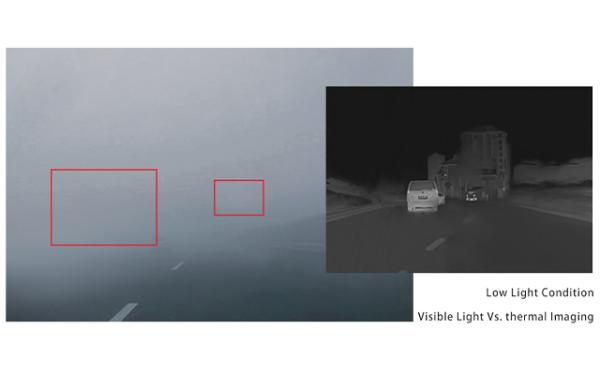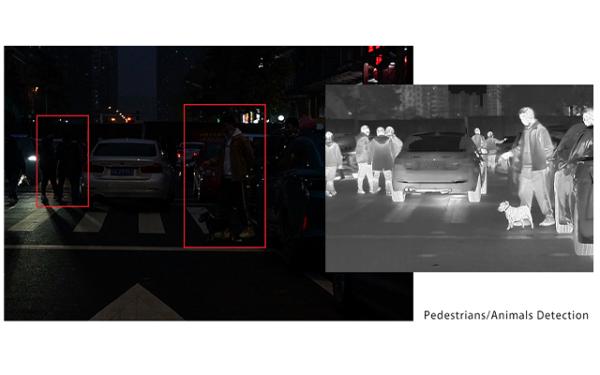The automotive industry is constantly evolving, driven by advancements in technology. One such innovation that has gained significant attention in recent years is the use of infrared lenses. These lenses, capable of detecting and capturing infrared radiation, have revolutionized various aspects of the automotive sector.
From enhancing safety and driver assistance systems to improving vehicle performance and comfort, infrared lenses offer a wide range of applications. In this article, we will explore the versatile uses of infrared lenses in the automotive industry and how they are shaping the future of transportation.
Enhancing Safety and Driver Assistance Systems
Infrared lenses play a crucial role in enhancing safety and driver assistance systems in automobiles. By detecting and interpreting infrared radiation, these lenses enable vehicles to perceive their surroundings beyond what is visible to the human eye.
This capability is particularly useful in adverse weather conditions such as fog, rain, or snow, where visibility is significantly reduced.
Low light condition visible light VS thermal imaging
With the integration of infrared lenses, automotive safety features like collision warning systems, adaptive cruise control, and lane departure warning systems can operate more effectively. Infrared sensors detect heat signatures, allowing vehicles to identify pedestrians, cyclists, and animals even in low-light or no-light situations. This advanced detection capability provides timely alerts to drivers, significantly reducing the risk of accidents and enhancing overall road safety.
Night Vision Systems and Autonomous Driving
Infrared lenses have proven instrumental in developing night vision systems and autonomous driving technologies. Night vision systems equipped with infrared lenses enable drivers to have a clearer view of the road ahead during nighttime driving.
By capturing and processing infrared radiation emitted by objects, these systems create a real-time image that enhances visibility beyond the reach of conventional headlights. This technology aids in the early detection of obstacles, pedestrians, and other vehicles, preventing accidents and improving overall driving experience.
Pedestrians/Animals Detection
Furthermore, infrared lenses have also found applications in autonomous vehicles. With the ability to detect heat signatures, infrared sensors can assist autonomous cars in recognizing and tracking objects in their vicinity. This allows for more accurate and reliable object detection, contributing to the safety and efficiency of self-driving vehicles.
By augmenting the capabilities of artificial intelligence systems, infrared lenses are facilitating the ongoing transition toward a future of autonomous transportation.
Climate Control and Passenger Comfort
Infrared lenses have made significant contributions to improving climate control and passenger comfort within vehicles. By accurately measuring the temperature distribution inside the cabin, infrared sensors enable more efficient climate control systems. This allows for precise and targeted temperature regulation, optimizing energy consumption and enhancing overall comfort for passengers.
In addition, infrared lenses also play a role in seat occupancy detection. By analyzing heat signatures, these lenses can determine if a seat is occupied or vacant. This information can be used to automatically adjust seat heating or cooling, ensuring optimal comfort for occupants.
Tire Monitoring and Performance Optimization
Infrared lenses have proven to be valuable in monitoring tire conditions and optimizing performance. By capturing the infrared radiation emitted by tires, these lenses can detect variations in temperature. This data helps identify anomalies such as underinflated or overheated tires, providing timely warnings to drivers. By preventing tire-related issues, such as blowouts or tread separation, infrared lens-based monitoring systems improve overall safety and reduce maintenance costs.
Furthermore, infrared lenses aid in optimizing vehicle performance by monitoring critical components such as brakes, engine parts, and exhaust systems. By detecting and analyzing temperature variations, these lenses can identify potential failures or inefficiencies, allowing for timely maintenance and repairs. This proactive approach not only ensures vehicle reliability but also contributes to fuel efficiency and reduced emissions.
Infrared lenses have emerged as a game-changer in the automotive industry, revolutionizing safety, driver assistance systems, comfort, and performance optimization. Their ability to capture and interpret infrared radiation expands the capabilities of vehicles, enabling them to operate more effectively in adverse conditions and improve overall road safety.
With ongoing advancements in infrared lens technology, we can expect to witness further integration and innovation, ultimately leading to enhanced autonomous driving capabilities and improved passenger experiences. As the automotive industry continues to evolve, infrared lenses will undoubtedly play a pivotal role in shaping the future of transportation.
Post time: Sep-20-2023





